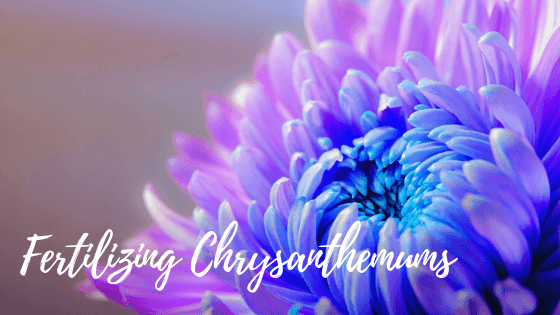Chrysanthemums are one of the best interior gift plants. They’re bright, vibrant and make the room cheerful. They are commonly used as a get-well gesture or a birthday bouquet.
They also make any home landscape even better than ever. However, garden mums, another name for Chrysanthemums, are among the hardiest varieties of flowers. They’re tough and resilient for sure. But for them to provide perennial excellence year after year, they require pinching in the vegetative stage, irrigation, fertilizers, and protection from pests.
To ensure a healthy and a steady supply of those lovely rayed flowers, your mum plants need to be fed with good plant nutrition. It is essential to their vitality and healthy growth. That’s why we put this post together to help you grow the best chrysanthemums your neighbors have ever seen. Let’s get started:
When to fertilizer your chrysanthemums?
During their vegetative phase, give your mum plants enough nitrogen and potassium. There are several options for this, from the homegrown DIY route to professional mixes sold at your local nursery. You need to feed the plants before flower buds form, otherwise they won’t be as productive in bloom. This will promote healthy roots, bud development, and a vigorous plant. Depending upon your USDA zone, start a feeding cycle from March to May, after all the dangers of frost have passed. This way, any new growth forced by the nutrients will not be in danger of damage from icy weather. Then continue feeding your chrysanthemums monthly until June to July, or when the plant is forming flower buds. You can also opt to use a slow release fertilizer applied in March to April that will finish by July.
What fertilizer should you use on your chrysanthemums?
Like most gardeners, you can opt to use a granular application with a formulation of 6-2-4 or 4-2-3 analysis for fertilizing your mum plants. And the rate should be 1 pound per 100 square feet of garden bed.
Soluble fertilizers can also come in handy. Mix them with water according to the manufacturer’s instructions, and apply them to the root zone of the plant. Use a 20-20-20 or 15-15-15 balanced nutrient solution for this method of feeding.
Last is time-release fertilizers. These only need to be applied once, but will slowly release nutrients over a period of approximately 3 months. These often come in the form of fertilizer spikes that you drive into the ground near the root zone of the plant. Use a 12-6-6 if you’re applying a slow release food. Just make sure you get it on early enough that the nutrients will be absorbed by mid-summer and remember not to feed again until next spring.
How to fertilize your mum plants?
If you’ll be using soluble fertilizer, you can just water in the product at the beginning of the month. However, dry preparations need to be measured and scratched into the soil. Then follow this with a deep watering to carry nutrients to the roots and help prevent salt build up in the topsoil.
If you have container plants, remember to leach them once per month to avoid excess salt in the soil. Remember to also pinch off the tips of the branches as your mum plants grow. This will force a more compact plant and more bountiful blossoms. You have to do this once per month from May to late June or early July. Then stop pinching at this time to prevent removing the new flower buds, which will mature by the end of summer or early fall.
There’s a lot of great fertilizer products available for your chrysanthemums. Just be sure to understand the right timing and dosage for whichever one you choose, and you’ll do just fine!


